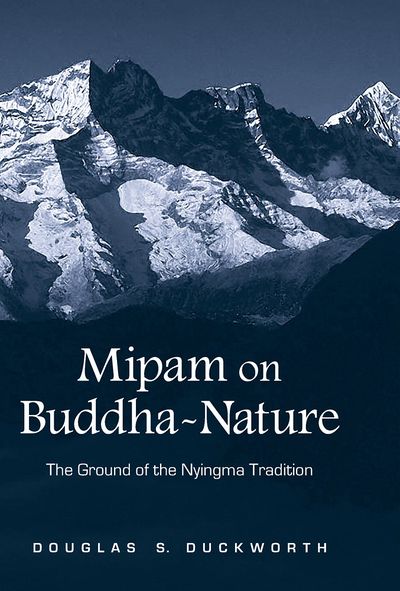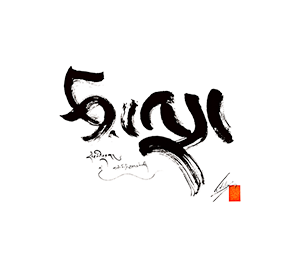Mipam on Buddha-Nature
< Books
| (8 intermediate revisions by 3 users not shown) | |||
| Line 1: | Line 1: | ||
{{Book | {{Book | ||
| − | |||
|BookPerson={{Book-person | |BookPerson={{Book-person | ||
|PersonPage=Mi pham rgya mtsho | |PersonPage=Mi pham rgya mtsho | ||
| Line 9: | Line 8: | ||
}} | }} | ||
|FullTextRead=No | |FullTextRead=No | ||
| − | |BookToc=*Preface ix | + | |TextTranslated=Texts/Bde gshegs snying po'i stong thun chen mo seng+ge'i nga ro |
| − | + | |BookToc=* {{i|Preface|ix}} | |
| − | *Introduction xi | + | * {{i|Introduction|xi}} |
| − | **Presence and Absence xii | + | ** {{i|''Presence and Absence''|xii}} |
| − | **Historical Survey xvii | + | ** {{i|''Historical Survey''|xvii}} |
| − | **Monastic Education and the Nonsectarian Movement xx | + | ** {{i|''Monastic Education and the Nonsectarian Movement''|xx}} |
| − | **Life and Works of Mipam xxiii | + | ** {{i|''Life and Works of Mipam''|xxiii}} |
| − | **Summary of Contents xxviii | + | ** {{i|''Summary of Contents''|xxviii}} |
| − | **The End of the Beginning xxxii | + | ** {{i|''The End of the Beginning''|xxxii}} |
| − | + | * {{i|Chapter 1. Buddha-Nature and the Unity of the Two Truths|1}} | |
| − | *Chapter 1. Buddha-Nature and the Unity of the Two Truths 1 | + | ** {{i|''Introduction''|1}} |
| − | **Introduction 1 | + | ** {{i|''Mipam’s Synthesis''|4}} |
| − | **Mipam’s Synthesis 4 | + | ** {{i|''Two Truths''|6}} |
| − | **Two Truths 6 | + | ** {{i|''Buddha-Nature as the Unity of Appearance and Emptiness''|13}} |
| − | **Buddha-Nature as the Unity of Appearance and Emptiness 13 | + | ** {{i|''Buddha-Nature as the Definitive Meaning''|20}} |
| − | **Buddha-Nature as the Definitive Meaning 20 | + | ** {{i|''Conclusion''|26}} |
| − | **Conclusion 26 | + | * {{i|Chapter 2. Middle Way of Prāsaṅgika and Yogācāra|27}} |
| − | + | ** {{i|''Introduction''|27}} | |
| − | *Chapter 2. Middle Way of Prāsaṅgika and Yogācāra 27 | + | ** {{i|''Svātantrika-Prāsaṅgika''|28}} |
| − | **Introduction | + | ** {{i|''Dialectical Ascent''|39}} |
| − | **Svātantrika-Prāsaṅgika | + | ** {{i|''Foundations of Yogācāra''|45}} |
| − | **Dialectical Ascent | + | ** {{i|''Prāsaṅgika versus Yogācāra''|51}} |
| − | **Foundations of Yogācāra | + | ** {{i|''Conclusion''|53}} |
| − | **Prāsaṅgika versus Yogācāra | + | * {{i|Chapter 3. The Present Absence|55}} |
| − | **Conclusion | + | ** {{i|''Introduction''|55}} |
| − | + | ** {{i|''Other-Emptiness in the Jonang''|57}} | |
| − | *Chapter 3. The Present Absence 55 | + | ** {{i|''Other-Emptiness and the Nyingma: Lochen Dharmaśrī''|66}} |
| − | **Introduction | + | ** {{i|''Another Emptiness? Emptiness of Self/Other''|71}} |
| − | **Other-Emptiness in the Jonang | + | ** {{i|''Phenomena and Suchness''|73}} |
| − | **Other-Emptiness and the Nyingma: Lochen Dharmaśrī | + | ** {{i|''De/limiting Emptiness''|81}} |
| − | **Another Emptiness? Emptiness of Self/Other | + | ** {{i|''Emptiness as the Unity of Appearance and Emptiness''|85}} |
| − | **Phenomena and Suchness | + | ** {{i|''Conclusion''|91}} |
| − | **De/limiting Emptiness | + | * {{i|Chapter 4. Buddha-Nature and the Ground of the Great Perfection|93}} |
| − | **Emptiness as the Unity of Appearance and Emptiness | + | ** {{i|''Introduction''|93}} |
| − | **Conclusion | + | ** {{i|''Distinguishing the Views on Buddha-Nature''|94}} |
| − | + | ** {{i|''Buddha-Nature as Heritage, Buddha-Nature as the Ground''|99}} | |
| − | *Chapter 4. Buddha-Nature and the Ground of the Great Perfection 93 | + | ** {{i|''Appearance and Reality''|107}} |
| − | **Introduction | + | ** {{i|''Conclusion''|114}} |
| − | **Distinguishing the Views on Buddha-Nature | + | * {{i|Chapter 5. The Indivisible Ground and Fruition|117}} |
| − | **Buddha-Nature as Heritage, Buddha-Nature as the Ground | + | ** {{i|''Introduction''|117}} |
| − | **Appearance and Reality | + | ** {{i|''Establishing Buddha-Nature: The Immanent Buddha''|118}} |
| − | **Conclusion | + | ** {{i|''Establishing Appearances as Divine''|124}} |
| − | + | ** {{i|''Buddha-Nature and a Difference Between Sūtra and Mantra''|131}} | |
| − | *Chapter 5. The Indivisible Ground and Fruition 117 | + | ** {{i|''Conclusion''|139}} |
| − | **Introduction | + | * {{i|Conclusion|141}} |
| − | **Establishing Buddha-Nature: The Immanent Buddha | + | * {{i|Translations of Primary Texts|145}} |
| − | **Establishing Appearances as Divine | + | ** {{i|Appendix 1. ''Lion’s Roar: Exposition of Buddha-Nature''|147}} |
| − | **Buddha-Nature and a Difference Between Sūtra and Mantra | + | *** {{i|Stating Other Traditions|149}} |
| − | **Conclusion | + | *** {{i|Presenting Our Authentic Tradition|153}} |
| − | + | **** {{i|The Meaning of the First Verse "Because the body of the perfect<br>Buddha is radiant"|153}} | |
| − | *Conclusion 141 | + | **** {{i|The Meaning of the Second Verse "Because thusness is indivisible"|159}} |
| − | *Translations of Primary Texts | + | **** {{i|The Meaning of the Third Verse "Because of possessing heritage"|162}} |
| − | **Appendix 1. Lion’s Roar: Exposition of Buddha-Nature | + | *** {{i|Refuting the View that [the Basic Element] Is Truly Established and Not Empty|167}} |
| − | ***Stating Other Traditions | + | *** {{i|Refuting the View that [the Basic Element] Is a Void Emptiness|168}} |
| − | ***Presenting Our Authentic Tradition | + | *** {{i|Refuting the Apprehension of [the Basic Element] as Impermanent and Conditioned|170}} |
| − | ****The Meaning of the First Verse | + | ** {{i|Appendix 2. ''Notes on the Essential Points of [Mipam’s] Exposition<br>[of Buddha-Nature]''|181}} |
| − | ****The Meaning of the Second Verse | + | * {{i|Notes|191}} |
| − | ****The Meaning of the Third Verse | + | * {{i|Bibliography|265}} |
| − | ***Refuting the View that [the Basic Element] Is Truly Established and Not Empty | + | * {{i|Index|281}} |
| − | ***Refuting the View that [the Basic Element] Is a Void Emptiness | + | |QuotesTabContent={{GetBookQuotes}} |
| − | ***Refuting the Apprehension of [the Basic Element] as Impermanent and Conditioned | + | |PublisherLogo=File:SUNY Press logo.jpg |
| − | **Appendix 2. Notes on the Essential Points of [Mipam’s] Exposition [of Buddha-Nature] | + | |StopPersonRedirects=No |
| − | |||
| − | *Notes 191 | ||
| − | *Bibliography 265 | ||
| − | *Index 281 | ||
|AddRelatedTab=No | |AddRelatedTab=No | ||
| − | | | + | |BookParentPage=Secondary Sources |
|AddQuotesTab=Yes | |AddQuotesTab=Yes | ||
}} | }} | ||
Latest revision as of 12:17, 30 June 2023
A comprehensive overview of Tibetan Buddhist thinker Mipam’s work on emptiness and Buddha-nature.
Mipam ( 'ju mi pham rgya mtsho, 1846–1912) is one of the most prolific thinkers in the history of Tibet and is a key figure in the Nyingma tradition of Buddhism. His works continue to be widely studied in the Tibetan cultural region and beyond. This book provides an in-depth account of Mipam’s view, drawing on a wide range of his works and offering several new translations. Douglas S. Duckworth shows how a dialectic of presence and absence permeates Mipam’s writings on the Middle Way and Buddha-nature.
Arguably the most important doctrine in Buddhism, Buddha-nature is, for Mipam, equivalent to the true meaning of emptiness; it is the ground of all and the common ground shared by sentient beings and Buddhas. This ground is the foundation of the path and inseparable from the goal of Buddhahood. Duckworth probes deeply into Mipam’s writings on Buddha-nature to illuminate its central place in a dynamic Buddhist philosophy. (Source: SUNY Press)
| Citation | Duckworth, Douglas S. Mipam on Buddha-Nature: The Ground of the Nyingma Tradition. Albany: State University of New York Press, 2008. http://promienie.net/images/dharma/books/mipham_buddha-nature.pdf. |
|---|---|


